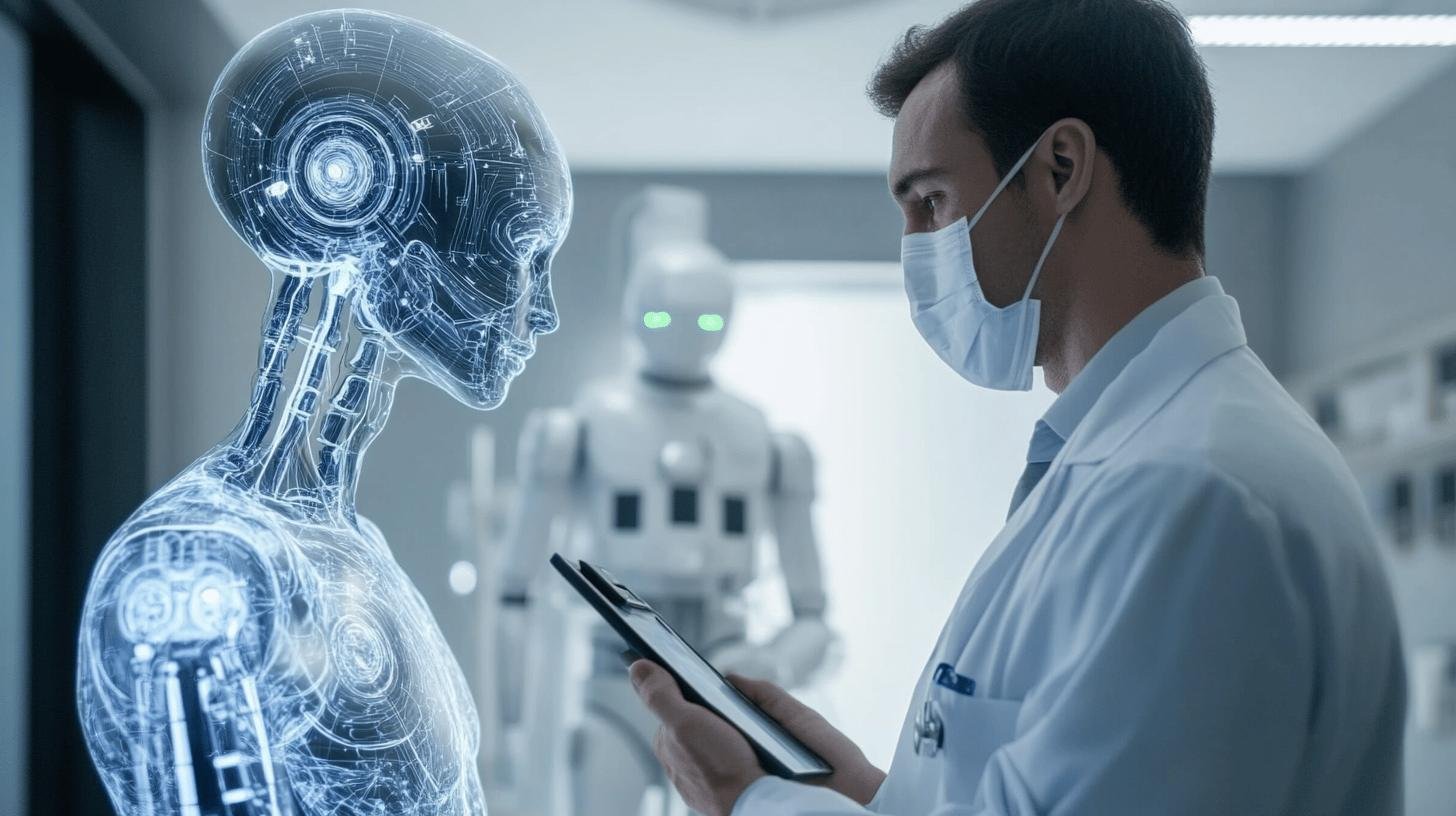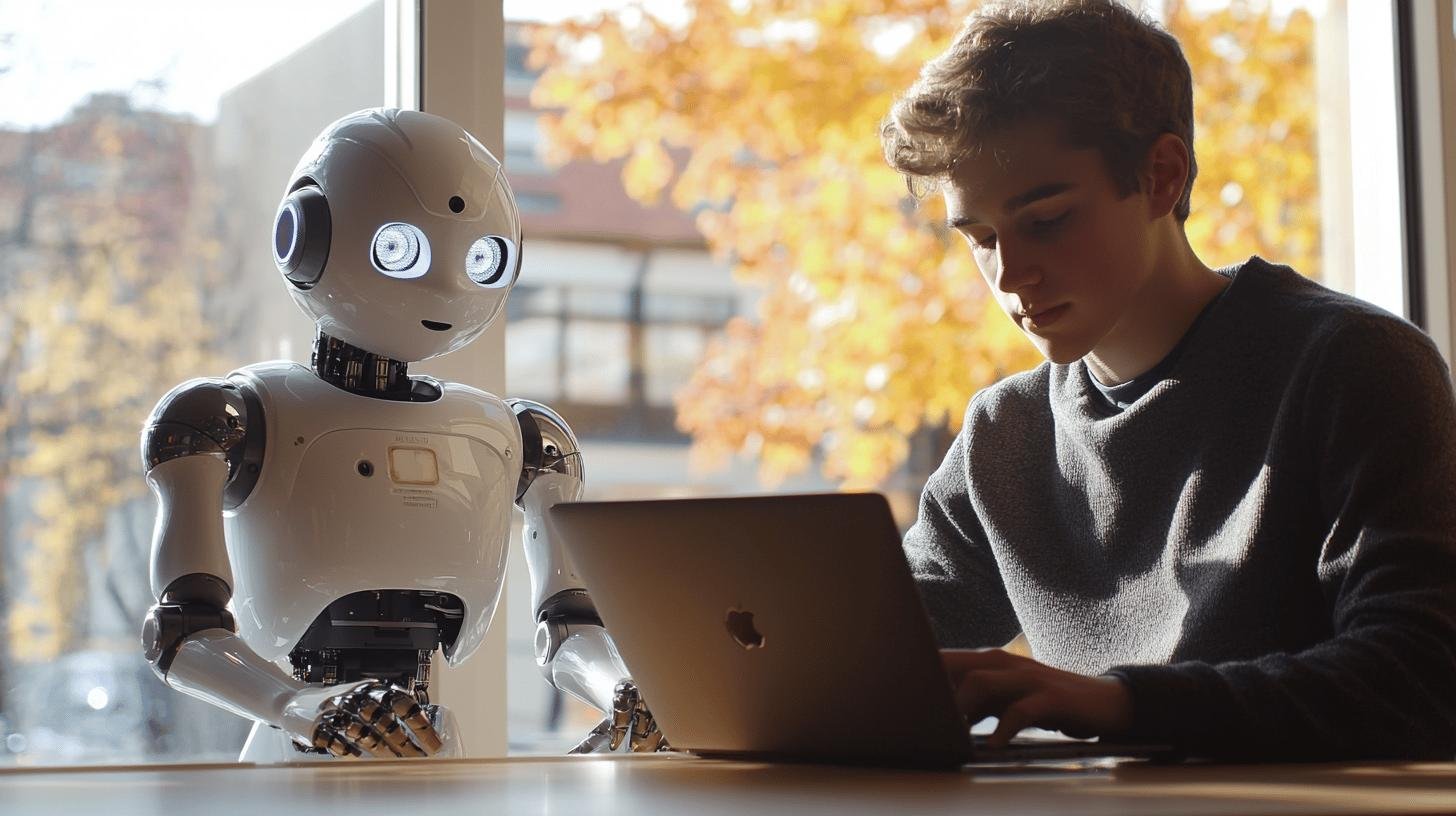Ever tried to figure out what happens when humans and artificial intelligence (AI) work as a dynamic duo? Welcome to the world of collaborative AI! Imagine an AI system that not only makes you more efficient but combines your brainpower with its processing speed to boost decision-making and innovation. In this blog, we want to find out what is collaborative AI, how it works, and why it’s becoming a game-changer in human-AI partnerships. Ready to geek out about the future of teamwork? Follow closely!
What Is Collaborative AI: Boosting Human-AI Synergy
Collaborative AI refers to artificial intelligence systems designed to work with humans or other AI systems. The goal? To boost decision-making, efficiency, and innovation. Think of it as a super smart coworker who helps you solve problems and get tasks done faster. By combining human expertise with machine learning algorithms, collaborative AI makes problem-solving more effective and task execution smoother.
AI cooperation works by integrating human skills and AI-driven technologies. Imagine you’re building a Lego set. You and the AI both have pieces, but while you follow the instructions, the AI suggests faster ways to put it together or even points out mistakes you might miss. This teamwork between humans and AI systems results in better outcomes and more efficient processes.
The significance of human-AI collaboration can’t be overstated. When humans and AI work together, they create a sum that’s greater than its parts. This collaboration allows for more innovative solutions and improved productivity. By leveraging the strengths of both humans and AI, businesses can achieve greater efficiency and success.
Examples of Collaborative AI in Action

Collaborative AI is the change needed in many industries. It’s like having a super-smart co-worker who helps you tackle tasks more efficiently. Whether it’s healthcare, customer service, or internal communications, collaborative AI tools are making a significant impact. By working alongside humans, AI can enhance productivity and streamline processes, making life easier for everyone involved.
Let’s see what AI-assisted medical diagnostics looks like. Imagine you’re a doctor looking at a bunch of X-rays. AI can analyze these images much faster than a human, spotting tiny details that might be missed. This collaboration allows doctors to make quicker, more accurate diagnoses, ultimately improving patient care. It’s like having a second set of eyes that never gets tired.
Other industries are also reaping the benefits of collaborative AI. In customer service, chatbots manage routine questions, freeing up human agents to handle more complex issues. Tools like Slack and Asana are boosting internal communications and project management, making teams more efficient. From healthcare to project management, collaborative AI is proving to be an invaluable asset.
Benefits of Collaborative AI for Business Owners
Collaborative AI can seriously increase your productivity. Imagine having a ‘help’ that never gets tired, works around the clock, and handles tasks rapidly. Businesses using collaborative AI see a big boost in how fast and efficiently they can get things done. It’s like having an extra set of hands that can process data, manage schedules, and even make decisions—all without breaking a sweat.
When it comes to accuracy, collaborative AI is the next big thing. It handles data like a pro, spotting patterns and details that humans might miss. This means fewer mistakes and better outcomes. Think of it like having a super-smart assistant who double-checks everything you do, ensuring that all your business decisions are spot-on. Plus, AI can process massive amounts of data in no time, giving you insights that can steer your business in the right direction.
By taking over the not-so-important tasks, collaborative AI frees up your employees to focus on higher-value activities. Instead of getting pinned down with repetitive tasks and to-do’s, your team can concentrate on creative and strategic work. This not only boosts morale but also makes your business more innovative and competitive.
Challenges in Implementing Collaborative AI

Implementing collaborative AI comes with some serious challenges. On top of that list is data privacy. Imagine you’re sharing a secret with a friend, and you want to be sure it stays between you two. With AI, it’s crucial to protect sensitive information from getting into the wrong hands. Ethical implications are another concern. How do we ensure AI makes fair decisions without bias? It’s like making sure your robot assistant doesn’t play favorites.
Managing human and machine roles is another tricky part. You need to strike the right balance so that AI complements human skills rather than replacing them. Think of it as a dance where both partners need to sync perfectly. Employees might feel uneasy about AI taking over their jobs, but showing them how AI can assist rather than replace them can ease their worries. Collaboration isn’t just about humans and AI; it involves input from researchers, domain experts, ethicists, and other stakeholders to create a harmonious working environment.
Addressing these challenges is crucial for successful AI implementation. Like building a strong foundation for a house; without it, everything falls apart. By tackling data privacy, ethical issues, and balancing human-AI roles, businesses can make the most of collaborative AI and set the stage for a future full of innovation and efficiency.
Collaborative AI Tools and Technologies
AI tools are improvements for business operations. They help automate repetitive tasks, analyze massive amounts of data, and improve overall efficiency. Imagine having a super-smart assistant that never gets tired and can process tons of information in seconds. That’s what AI tools bring to the table. They make your team’s workflow smoother, faster, and more effective.
Let’s talk about some specific tools like Slack and Asana. Slack is an AI-powered communication platform that keeps your team connected. It handles routine tasks like message sorting and reminders, so you don’t have to. Asana, on the other hand, is all about project management. It uses AI to help you plan, track, and manage tasks effortlessly. It’s like having a project manager who never sleeps.
These tools boost productivity and efficiency by taking over mundane tasks, allowing your team to focus on more critical activities. They help you get more done in less time, making your business operations smoother and more efficient. Whether it’s improving communication with Slack or managing projects with Asana, AI tools are essential for modern business success.
Future Trends in Collaborative AI

The synergy between human and artificial intelligence creates a powerful partnership where both collaborate to achieve greater results. Collaborative AI harnesses the strengths of humans and machines, moving beyond the traditional “human vs. machine” mindset. By working together, they solve problems more quickly and efficiently, complementing each other’s unique abilities.
Exciting trends in collaborative AI are on the horizon. We’re seeing more adaptive, learning AI systems that improve over time, much like humans do. Imagine an AI that learns from its own mistakes, becoming more effective with each task. There’s also deeper integration with the Internet of Things (IoT), allowing AI to interact with everyday devices, simplifying daily life. Plus, human-centered AI collaboration is growing, focusing on making AI seamlessly enhance people’s work and tasks.
Conclusion
In today’s blog post, we delved into the essence of collaborative AI and its growing importance in enhancing decision-making and fostering innovation. We explored real-world applications, such as AI-assisted medical diagnostics, which are revolutionizing healthcare, and tools like Slack and Asana that streamline workflows and boost efficiency in everyday business operations.
Beyond these examples, we examined the significant business benefits that collaborative AI offers, from improved productivity to smarter data management, helping companies make more informed and strategic decisions. We also touched on the challenges that still exist, as well as the exciting future trends, like more adaptive AI systems and deeper integration with everyday technology.
At its core, collaborative AI is about blending human expertise with the advanced capabilities of AI, creating a powerful partnership. The future looks promising, with more adaptive, integrated systems on the horizon, ready to reshape industries. If you’re ready to embrace collaborative AI, the possibilities for growth and transformation are truly endless!
FAQ
What is an example of collaborative AI?
Collaborative AI examples include AI-assisted medical diagnostics and chatbots in customer service. These tools enhance human decision-making by analyzing images or handling inquiries while humans tackle complex cases.
What is the meaning of collaborative intelligence?
Collaborative intelligence blends human expertise with AI technology, creating stronger, more efficient problem-solving teams. It’s humans and AI working together, each doing what they do best.
How can we collaborate with AI?
We collaborate with AI by integrating it into workflows. For instance, using AI tools like Slack or Asana helps automate tasks, freeing up time for more valuable work.
What is human AI collaboration?
Human-AI collaboration means humans and AI working as a team. It combines human creativity and judgment with AI’s ability to process information quickly, leading to better decisions and productivity.




